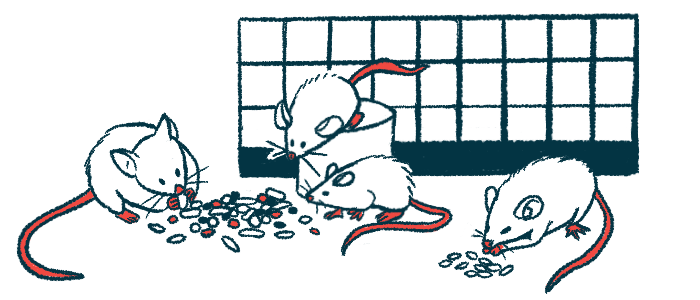Baricitinib reduced lung, skin fibrosis in scleroderma mouse model: Study
The anti-inflammatory therapy is approved to treat some forms of arthritis
Written by |

Baricitinib, an anti-inflammatory therapy approved to treat some forms of inflammatory arthritis, showed promising effects in a mouse model of systemic sclerosis (SSc)-associated lung disease.
“This study demonstrates that baricitinib successfully attenuates bleomycin-induced injury and fibrosis of the skin and lung,” the researchers wrote in “Crosstalk between the JAK2 and TGF-[beta]1 signaling pathways in scleroderma-related interstitial lung disease targeted by baricitinib,” which was published in Advances in Rheumatology.
“We conclude that baricitinib can play a role in preventing the occurrence and progression of pulmonary and skin fibrosis in SSc patients,” they said. “Since baricitinib has been approved for the treatment of [rheumatoid arthritis], which indicates this drug is safe for [people] … baricitinib is a promising candidate drug for the prevention of pulmonary complications in patients with SSc.”
Baricitinib is approved to treat certain patients with rheumatoid arthritis, COVID-19, and alopecia areata. It’s sold by Eli Lilly under the brand name Olumiant. Eli Lilly was not involved in the study.
Scientists in China tested baricitinib to see if it may have beneficial effects in a mouse model of SSc-associated lung disease. Interstitial lung disease, or ILD, a lung disorder marked by fibrosis (scarring) in the lungs, is commonly seen with systemic scleroderma and associated with worse clinical outcomes.
Baricitinib’s effects on inflammation in scleroderma mice
The researchers used a mouse model of SSc-associated ILD induced by injecting the mice with a chemical called bleomycin that triggers lung scarring. Baricitinib was administered into the animals’ stomachs every two days.
In this model, mice have a sharp reduction in body weight about a month after being given bleomycin. At the same time, the relative weight of the lungs increases, due to scar tissue building up.
After nearly a month, the mice given baricitinib had significantly higher body weights than the ones that didn’t receive it, though the body weight of baricitinib-treated mice remained much lower than healthy mice.
Baricitinib reduced levels of pro-inflammatory signaling molecules while simultaneously increasing levels of the anti-inflammatory molecules interleukin-4 and interleukin-10, analyses suggested. It also reduced collagen (a protein that forms the main component of scar tissue) in the lungs and skin relative to the bleomycin group.
Baricitinib is thought to work by blocking the activity of Janus kinases (JAKs), a family of signaling proteins that coordinate inflammatory responses. Data from the mouse models, as well as additional cell experiments, indicated levels of the protein JAK2 were elevated in mice with fibrosis, but decreased with baricitinib.
The treatment also reduced the activity of the TGF-beta1 pathway, a molecular signaling pathway with a well established role in promoting scar formation.
“The JAK2 and TGF-[beta]1 signaling pathways were found to be involved in the development of [scleroderma-associated] ILD, and its inhibitor baricitinib is a potential therapeutic candidate,” the researchers said.






